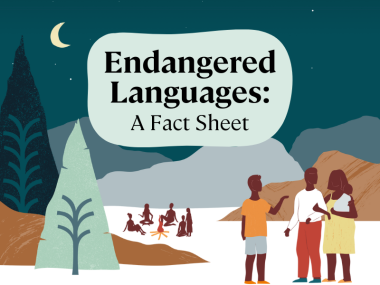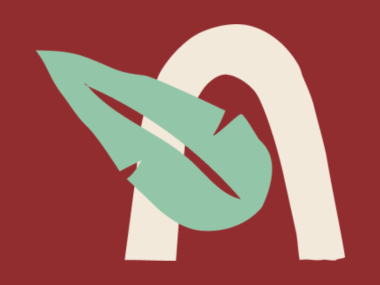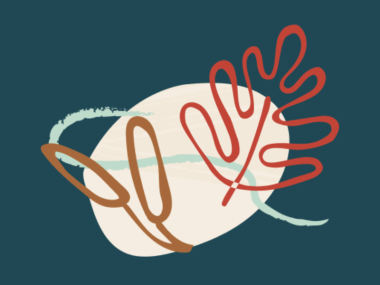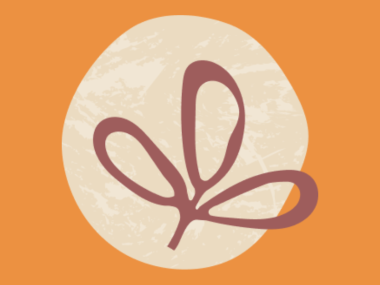Education - both formal and informal - has a vital role to play in Indigenous, endangered, and minoritized language revitalization.
Families and communities have always educated their children, sharing cultural knowledge, language, and teachings with younger generations. Thus, the term ‘education’ refers not only to schooling and formal programs, but also importantly refers to community-based work, such as learning from Elders, sharing stories, using the language in the home and community, engaging in the arts, and much more.
Indigenous language education also takes place within mainstream, dominant society schools, which often continues to position Indigenous language education as irrelevant, unnecessary, and sometimes even threatening to dominant societies. Indigenous communities have been working hard over generations to assert control over the schooling of their children, and have come up with multiple, diverse, and innovative ways to educate younger generations, both in what are considered ‘formal’ school settings and ‘informal’ educational settings.*
These resources focus on the role of education - both formal and informal - in the revitalization of Indigenous, endangered, and minoritized languages. These resources are grouped by topic and are aimed at people who have a community connection to an endangered language. If you are interested in language revitalization and education, here are some useful resources.
*A note on terminology: The terms ‘formal’ education and ‘informal’ education can be problematic for Indigenous Peoples and are related to dominant society’s ways of knowing about the meaning of education. For Indigenous Peoples, ‘education’ is inclusive of both formal and informal education. For dominant societies, ‘formal education’ most often only refers to schools and schooling, while ‘informal’ education refers to non-school environments.
Resources on formal education
ʻAha Pūnana Leo, Nāwahīokalaniʻōpuʻu: Hawaiian Language Nests
Ke Kula ʻO Nāwahīokalaniʻōpuʻu Iki Lab Public Charter School
Gaelic Medium Education: A lot more than two languages.
Higher education
Ka Haka ʻUla O Keʻelikōlani - Hawaiian Language College of the University of Hawaiʻi at Hilo
Wilson, W.H. (2018). Higher Education in Indigenous Language Revitalization. In L. Hinton, L. Huss, and G. Roche (Eds.). The Routledge Handbook of Language Revitalization. Routledge.
The role of institutions of higher education in teaching Indigenous languages: Ichishkíin and Chinuk Wawa. Joana Worth Jansen, Janne Lynne Underriner. Northwest Indian Language Institute.
Language teaching and curriculum
Teach Yukon Native Languages: A Guidebook for Native Language Instructors
Teaching resources from the Yukon Native Language Centre, including wordless storybooks, flashcards, gamecards, illustrations, ReadAlong Storybooks, etc.
Reclaiming Land and Languages: A Games-Based Learning Approach for the Indigenous Community. 2022. Jurana Aziz and Mary F. Hermes (with supplementary video)
Assessment
Second Language Proficiency Assessment Models. (2018). First Peoples' Cultural Council.
Constructing Assessments in Indigenous Languages to Inform Instruction. CARLA.
Development of a Choctaw Language Assessment Tool. National Indian Education Association (NIEA), Center for Applied Linguistics, Mississippi Band of Choctaw Indians
Formal/informal education: Language nests
Language nests can be considered a form of "formal" and/or "informal" early childhood education.
Aboriginal Children and Early Childhood Development and Education in Canada: Linking the Past and the Present to the Future. Greenwood, deLeeuw, Fraser. (2021). Canadian Journal of Native Education, 30(1), 5-18.
Moving Towards a Language Nest: Stories and Insights from nḱmaplqs. N. Chambers & D. Saddleman. 2020.
Language Nests on the Move: The Case of Võro Pre-Primary-Primary Education in Estonia.
Brown, K. & Faster, M. (2019, December). FIRE: Forum for International Research in Education, 5(3), 29–48.
Language nests as an emergent global phenomenon: Diverse approaches to program development and delivery. N. Chambers. (2015). The International Journal of Holistic Early Learning and Development, 1, 25-38.
First Peoples’ Cultural Council. (2014). The language nest story: As told by Kathy Michel [Video].
Parker, A., & Gessner, S. (2014). Language nest handbook for B.C. First Nations communities. First Peoples’ Cultural Council.
First Peoples' Cultural Council: Language Nest Toolkit (2022).
O le poutu: Women's roles and Samoan language nests. Utumapu, T. (1998). University of Auckland.
General bibliography of open-access readings
Aguilera, D. (2008). Academic success and cultural resiliency: Language immersion education among indigenous communities. EMIGRA Working Papers, 48.
Alexie, S., Alexie, O., Marlow, P. (2009). Creating Space and Defining Roles: Elders and Adult Yup’ik Immersion. Journal of American Indian Education, 48(3), pp. 1-18.
Baptiste, M. (2019). "When We Talk": Okanagan Ways of Speaking of Elders/Fluent Speakers in Social Domains of Language-in-Use Implications for Okanagan Language Revitalization (Doctoral dissertation, The University of Arizona), p. 78-82.
Galley, V., Gessner, S., Herbert, T., Thompson, K.T., & Williams, L. (2017). Indigenous Languages Recognition, Preservation and Revitalization A Report on the National Dialogue Session on Indigenous Languages: Abridged Version. First Peoples' Cultural Council: Brentwood Bay, BC.
Hermes, M. & Kawai’ae’a K. (2014). Revitalizing indigenous languages through indigenous immersion education. Journal of Immersion and Content-Based Language Education, 2(2), 303–322.
Hinton, L. (2003). How to teach when the teacher isn’t fluent. In J. Reyner, O.V. Trujillo, R.L. Carrasco, & L. Lockard (Eds.). Nurturing Native languages (pp. 79-92). Flagstaff, AZ: Northern Arizona University.
Hornberger, N.H. (2008). Can schools save Indigenous languages? Policy and practice on four continents. New York, NY: Palgrave Macmillan.
McInnes, B. D. (2013). Saving Culture Through Language: A Hermeneutic Phenomenological Study of Ojibwe Language Immersion Educator Experience. Journal of Applied Hermeneutics, (2).
McInnes, B. D. (2014). Teaching and Learning Ojibwe as a Second Language: Considerations for a Sustainable Future. Journal of Language Teaching and Research, 5(4), 751.
McIvor, O. & McCarty, T.L. (2017). Indigenous Bilingual and Revitalization Immersion Education in Canada and the USA. In García O., Lin A., May S. (Eds.), Bilingual and Multilingual Education. Encyclopedia of Language and Education (3rd ed.). Springer, Switzerland. https://doi.org/10.1007/978-3-319-02258-1_34
Ningewance, P. (2017). Gookom's Language: Learning Ojibwe and Becoming a Successful Ojibwe Eavesdropper.
A companion website for the book Paesani, K. and Menke, M. (2023). Literacies in Language Education: A Guide for Teachers and Teacher Educators. Washington, DC: Georgetown University Press.
Wilson, W. & Kawai‘aeʻa, K. (2007). I Kumu; I Lālā: “Let There Be Sources; Let There Be Branches”: Teacher Education in the College of Hawaiian Language, Journal of American Indian Education, 46(3), 37-53.
Further resources
Mokuola Honua Global Center for Indigenous Language Excellence - a compilation of resources in the following areas:
- Immersion Strategies and Initiatives: Teacher Education and Recruitment Efforts;
- Immersion Strategies and Initiatives: Curriculum, Lessons, and Program Examples;
- Immersion Strategies and Initiatives: Parent Language Learning and Programming;
- Immersion Strategies and Initiatives: Higher Education Programs.
Guidelines for Strengthening Indigenous Languages. (2001). Alaska Native Knowledge Network. Fairbanks, Alaska.
CARLA: Center for Advanced Research on Language Acquisition: Many resources, including bibliographies on one-way language immersion, two-way bilingual immersion, Indigenous immersion, struggling learners and language immersion education. Notable resources:
- Materials for Dual Language and Immersion Family Education - Guidelines for Implementation of Dual Language and Immersion Family Education - access to many materials, PowerPoint presentations, documents
- Social Justice in Language Education - research, resources for teachers, professional development, bibliography
- Immersion education and research
- Summer institutes
- Research projects (1994-2019), including abstracts of publications
Guide to Community Protocols for Indigenous Language Projects. (2004). Federation of Aboriginal and Torres Strait Islander Languages (FATSIL).
National Coalition of Native American Language Schools and Programs




